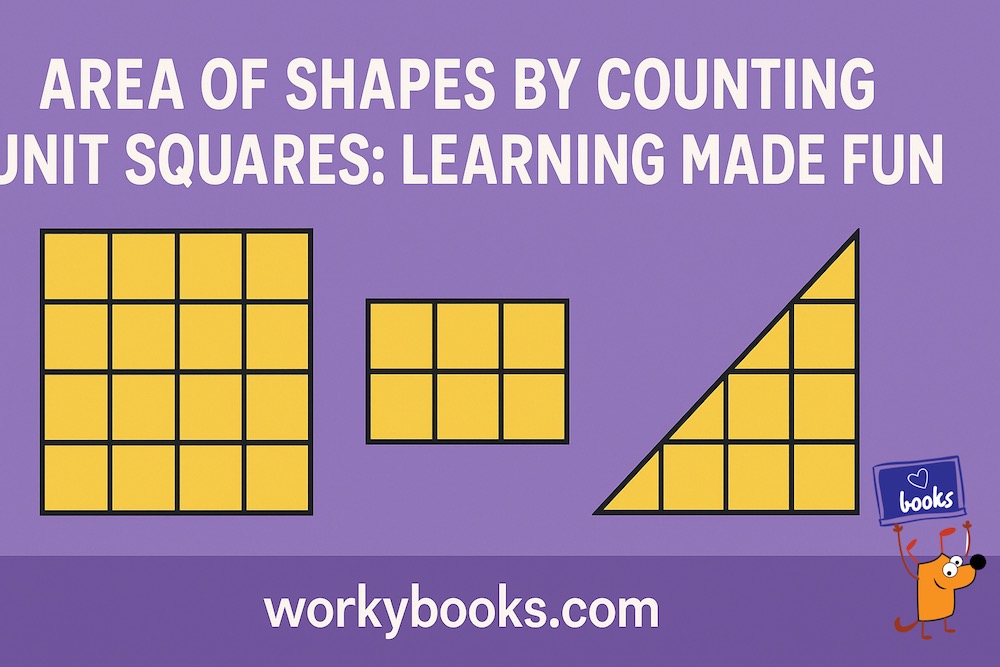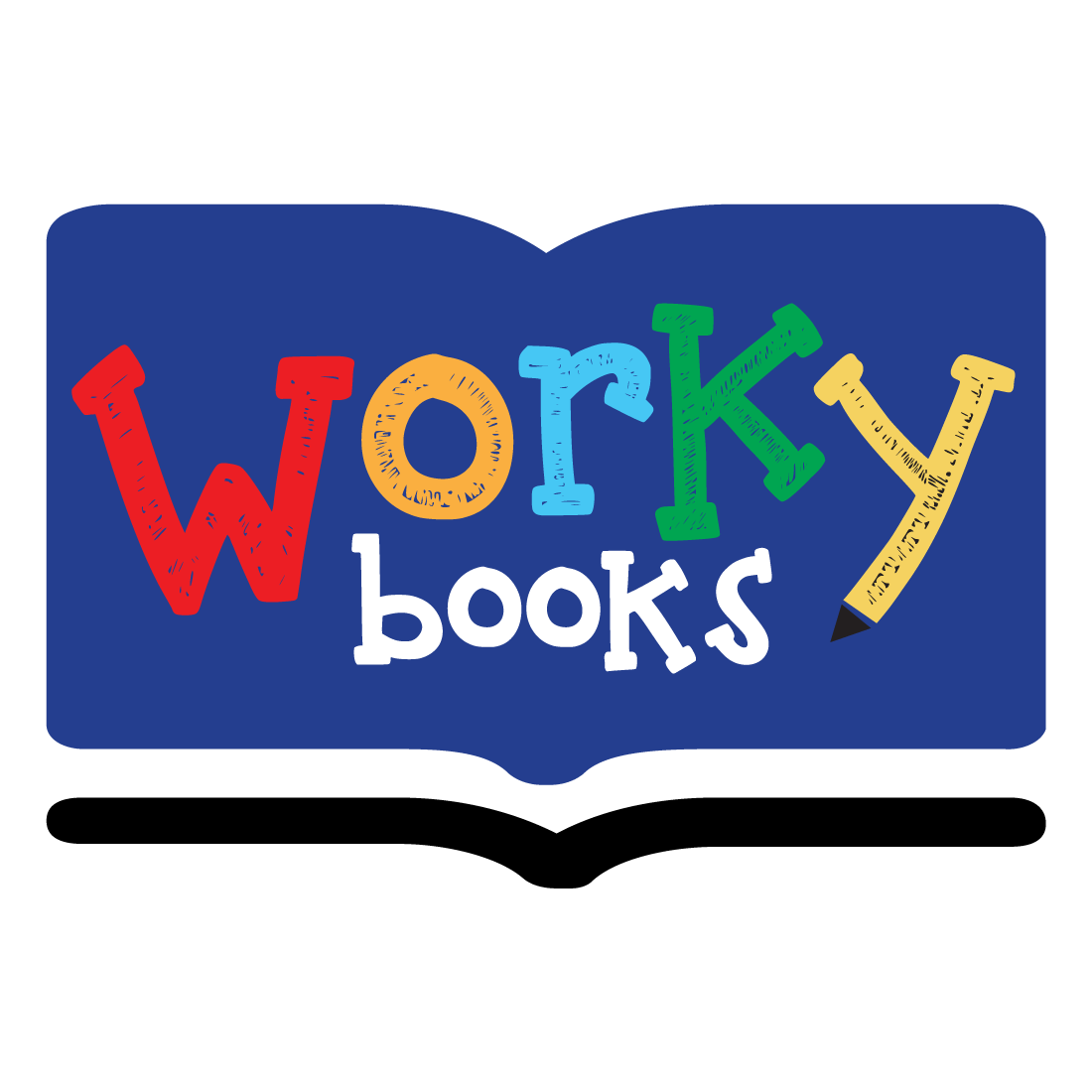Area of Shapes by Counting Unit Squares: Learning Made Fun

Understanding the concept of area is a vital part of early math education. For young learners, one of the simplest and most intuitive ways to grasp this concept is by counting unit squares. This visual and tactile method not only makes learning fun but also lays the foundation for more advanced geometry concepts in the future.
In this blog, we’ll explore how to teach and learn the area of shapes by counting unit squares, using engaging worksheets, real-life examples, and effective teaching strategies.
What Are Unit Squares and Why Are They Important?
A unit square is a square with a side length of one unit. It’s the basic building block for measuring area. When a shape is placed over a grid of unit squares, we can determine its area simply by counting how many of these squares it covers.
This method introduces students to the concept of area in square units, which helps them understand that area is a measurement of surface space.
For a helpful practice sheet, check out this Count unit squares worksheet that visually breaks down unit squares within different shapes.
How to Count Unit Squares
The process of finding the area using unit squares is straightforward:
- Place the shape on a grid of unit squares.
- Count each full unit square inside the shape.
- If there are half or partial squares, try to combine them logically into full units.
- The total number of full unit squares gives the area of the shape.
For example, if a rectangle covers 12 unit squares, its area is 12 square units.
Calculating Area of Squares and Rectangles
When it comes to standard shapes like squares and rectangles, counting unit squares becomes even easier.
- A square has equal-length sides, so students can count rows and columns and then multiply.
- A rectangle allows the same logic: multiply the number of rows by the number of columns.
This method reinforces multiplication skills while building a strong conceptual understanding of area. A great resource to support this topic is this worksheet on area of square and rectangle.
Using Worksheets to Reinforce Learning
Worksheets are a powerful tool for helping students practice and internalize what they’ve learned. When it comes to finding the area of shapes worksheet options, visual and interactive sheets are especially effective. These worksheets usually involve:
- Coloring unit squares to represent area
- Drawing shapes that cover a given number of unit squares
- Comparing shapes with different areas
If you’re looking for an interactive and fun worksheet, try this Area by counting unit square which is designed to visually engage young learners.
Visual Learning with Area of Figures Worksheet
Students benefit greatly from visual aids when learning math. Diagrams that break shapes down into smaller units are essential when using worksheets. For instance, an area of figures worksheet might include:
- Composite shapes divided into familiar rectangles
- Grid overlays for easier counting
- Clear labeling of unit squares
This approach trains the eye to estimate area, even for irregular or combined shapes.
Connecting Concepts with Real-World Examples
Understanding area through unit squares isn’t just about academics—it has real-world relevance. Students can connect the concept to:
- Tiling a bathroom floor
- Designing a garden layout
- Arranging furniture in a room
These examples make learning more meaningful and practical. Encourage students to use graph paper to model these examples and count the unit squares involved.
Practice with Area of a Shape Worksheet
Using a wide variety of worksheet types ensures that students don’t just memorize formulas, but actually understand what area represents. Try incorporating this Unit squares and area into your lessons to help students reinforce their counting and visualization skills.
An area of a shape worksheet like this can ask students to:
- Shade in a certain number of unit squares to form specific shapes.
- Determine which of two shapes has a greater area.
- Rearrange shapes without changing the area.
Common Mistakes and How to Fix Them
Even with visual methods, students can make some common errors:
- Miscounting partial squares – Encourage combining partials into wholes.
- Overlapping or underestimating squares – Use clear grids and double-check.
- Confusing perimeter with area – Reinforce the difference regularly with examples.
Fixing these errors early leads to a stronger understanding of geometric principles.
Encouraging Critical Thinking Through Activities
Beyond worksheets, use classroom games and activities like:
- “Guess the Area” challenges
- Group projects where students create shapes with a set area
- Hands-on manipulatives like tiles or cutouts
These methods nurture spatial reasoning and mathematical thinking. When students understand an area conceptually, they’re better prepared for learning formulas and tackling advanced math later.
Conclusion
Learning the area of shapes by counting unit squares is a fundamental skill that empowers students to visualize and measure space with confidence. It serves as a stepping stone to deeper geometry and algebraic thinking. With the right tools—like worksheets, visual aids, and real-life connections—students gain not only knowledge but also confidence.
Whether you’re a teacher, a homeschooling parent, or a student, using a mix of resources like an area of squares and rectangles worksheet, area of figures worksheet, or a finding the area of shapes worksheet can make a significant difference in your learning journey.
At Workybooks, we provide carefully designed worksheets like the area of a shape worksheet and area of squares and rectangles worksheet to support this learning journey. These resources help students practice, visualize, and apply their knowledge effectively—making math meaningful, one square unit at a time.
